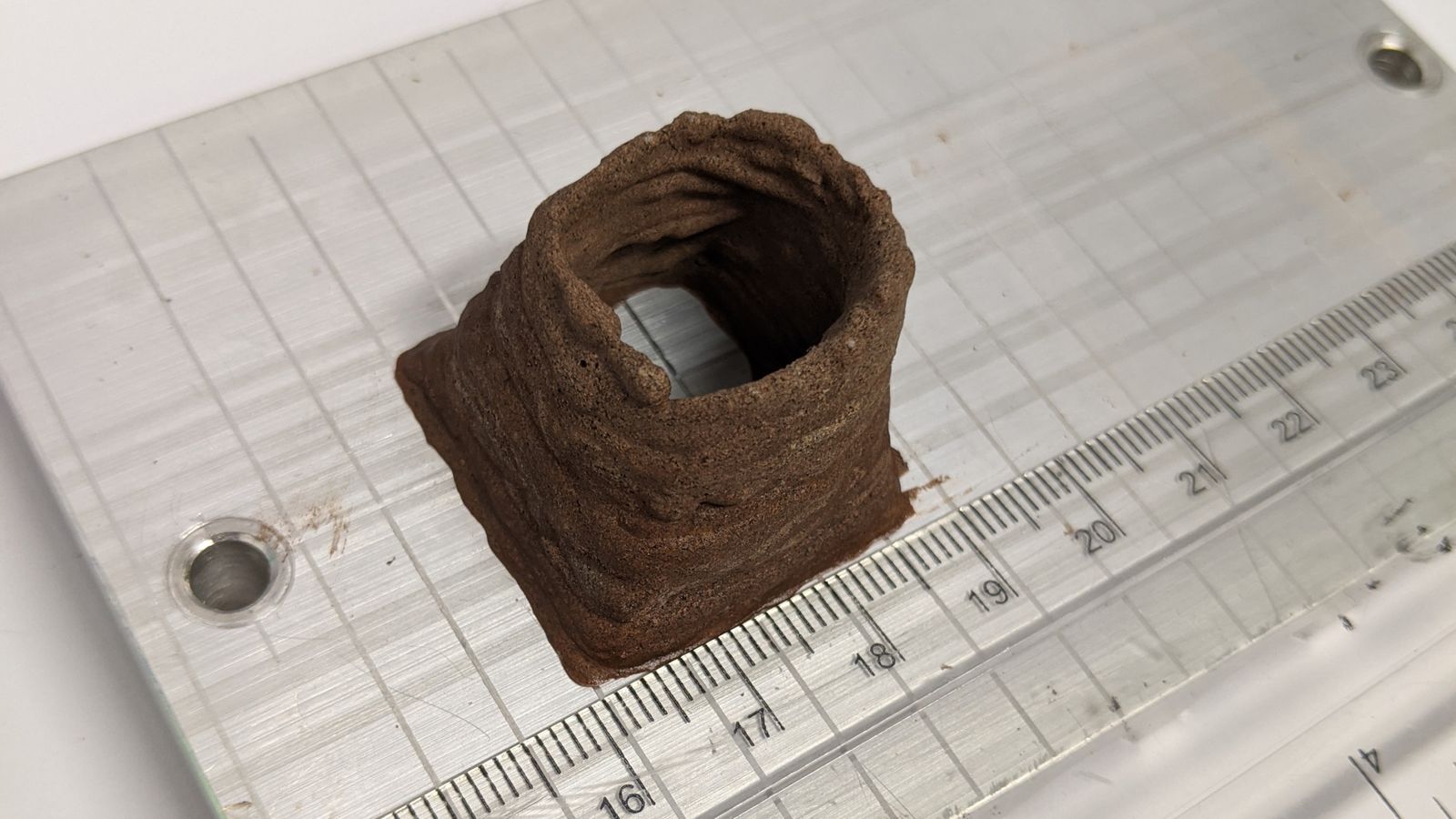Scientists in Britain have created a new material suitable for constructing buildings in space using space dust and bodily fluids from astronauts.
The concrete-like material is “perfectly suited for construction work in extra-terrestrial environments” such as on the moon or Mars, according to academics from the University of Manchester because it doesn’t involve transporting building blocks from Earth.
The cost of bringing a single brick to Mars has been estimated at about $2m (£1.4m), meaning future Martian colonists cannot take their building materials with them, but will have to utilise resources they can get on site for construction and shelter.
Instead, the bricks of these space colonies could be manufactured from “extra-terrestrial dust” mixed with “the blood, sweat and tears of astronauts”, says the study.
“Scientists have been trying to develop viable technologies to produce concrete-like materials on the surface of Mars, but we never stopped to think that the answer might be inside us all along,” says Dr Aled Roberts, who worked on the project.
The key is a common protein from blood plasma – human serum albumin – which is combined with urea, the waste product found in urine, sweat and tears.
These two could be mixed with dust from the lunar or Martian soil to produce a material stronger than ordinary concrete found on Earth.
Virgin Galactic flights grounded pending investigation into ‘mishap’ during Richard Branson space mission
UK rocket launches from Western Isles ahead of planned spaceport opening
The odds of a hazardous asteroid hitting Earth are higher than previously thought, NASA says
The resulting substance, termed ‘AstroCrete’, had compressive strengths that are 300% higher than normal concrete and can withstand the unusual weather conditions in space, the scientists have said.
Martian soil is thought to contain metals that could be extracted and melted down to form materials that can be used for a shelter and could generate electricity.
The methods drew inspiration from ancient construction techniques that involved mixing pig’s blood into lime mortar to act as the binding material. This is heralded as an important technological invention in Chinese architectural history.
“It is exciting that a major challenge of the space age may have found its solution based on inspirations from medieval technology,” said Dr Roberts.
“The concept is literally blood-curdling,” he said.
According to the team’s calculations, a crew of six astronauts on a two-year Mars mission could produce more than 500kg of AstroCrete.
This, used in combination with sandbags or bricks made of soil, would mean each crew member could produce enough AstroCrete to expand the habitat for one more person, effectively doubling the shelter space with each mission.
The study was published in the journal Materials Today Bio.






















